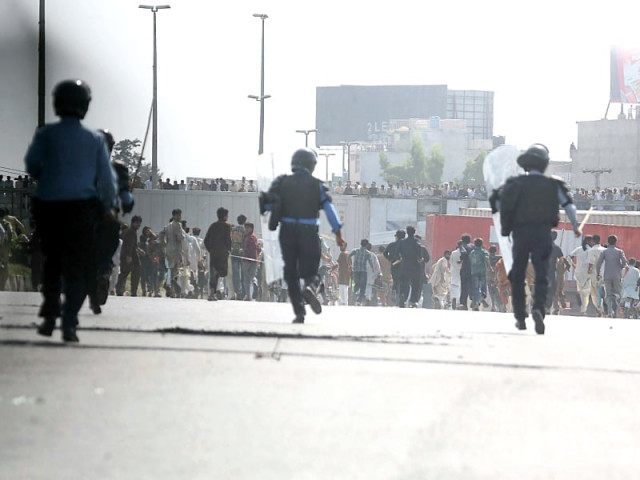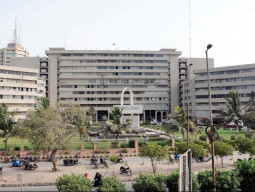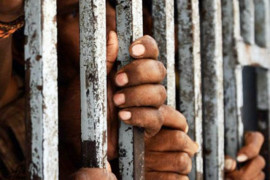
If you have been wondering why the law enforcers failed to control the violence that unfolded on Friday September 21, here’s the reason: a day before the protests broke out, the Karachi police had been ordered to surrender their assault weapons and were warned that if anyone dies, the policeman responsible will deal with the consequences himself.
On Ishq-e-Rasool (pbuh) Day, protesters against an anti-Islam movie went on a rampage, destroying properties worth billions of rupees throughout the country. In Karachi alone, several banks and fast food outlets as well as six cinemas were set ablaze.
The police took to the roads that were teeming with protesters, but constables up to the rank of SHOs were only armed with batons, teargas, handguns and shotguns (repeater guns). The officers who were DSPs and higher were, however, allowed to keep their automatic weapons for the day, a police officer told The Express Tribune on condition of anonymity.
The restrictions were followed up with further warnings that there should be no aerial firing to disperse the protesters and if there were any casualty, the department would not help the policeman get through the legal procedures and court proceedings.
“How could we handle the situation with so many restrictions,” complained a senior police officer, who spent the day in the midst of the mobs running amok. “The responsibility of the damage lies with the authorities, the political leadership and the clerics too.”
“[Still] the destruction was not at the level we were anticipating,” said Mithadar ASP Ali Asif.
Fierce rivals - the Shia-led Majlis-e Wahdat-e Muslimeen and Deoband-led Ahle Sunnat wal Jamaat - were together on the roads. “Any clash between the two would have resulted in massive bloodshed,” he said. “Any bomb blasts would also have raised the number of victims and the extent of the damage quite dramatically.”
Damage to police
Despite the relaxed approach adopted by the police, the protesters did not spare them. The Mangopir and Jackson police stations were ransacked, two Armoured Personnel Carriers - one at Lea Market and the other at Boulton Market - were torched, three police vans were damaged near Chief Minister House and two more at Mai Kolachi, and the police check posts at PIDC and Kharadar were set ablaze.
Apart from the thousands of rounds fired aerially to control the situation, the law enforcers used almost 100 teargas shells. The total loss sustained by the police department comes to around Rs47 million, said Finance DIG Dost Ali Baloch.
By the fifth of every month, all police stations provide the details of their funds and ammunition spent or required for the month to the logistics department, which later reissues them according to need. “The actual extent of the damage will be determined when the police stations submit their inventory for this month on October 5,” Baloch added.
Absence of Rangers
After public and private properties went up in flames and the protesters simmered down, paramilitary soldiers arrived at the scene. “They came when everything was done and dusted,” complained a police officer, who witnessed the situation firsthand.
“If the government would have deployed the Rangers along with the police, the damage may have been considerably less,” he said. “Usually, they [Rangers] jump into everything, but not this time.”
Refuting the allegations, a Rangers official, not wanting to be named, said that the paramilitary soldiers only moved in when the situation goes out of control. “We rescued the police and even called the fire brigade for help,” he said. “We are a standby force and only helped when the mob went berserk.’
Published in The Express Tribune, September 23rd, 2012.


















COMMENTS
Comments are moderated and generally will be posted if they are on-topic and not abusive.
For more information, please see our Comments FAQ